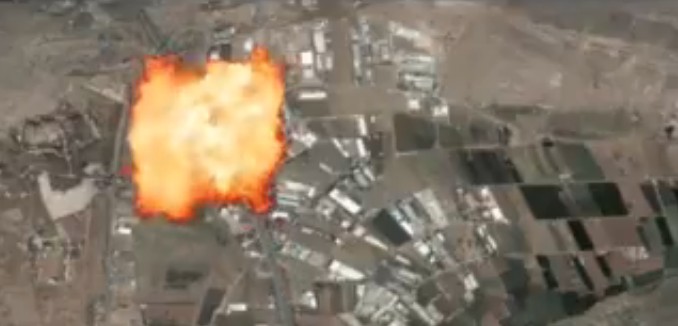Following unsuccessful rocket attacks on the Golan Heights, Israel struck back overnight at dozens of Iranian targets inside Syria, The New York Times reported Thursday.
According to the IDF, some 20 rockets were fired at Israeli positions on the Golan Heights by Islamic Revolutionary Guard Corps(IRGC)-Quds Force troops. Four of the rockets were reported to have been intercepted by Iron Dome anti-missile systems; the other apparently fell short landing in Syrian territory.
In response, Israel launched attacks against much of Iran’s military infrastructure in Syria. According to Israeli Defense Minister Avigdor Liberman, the attacks destroyed “nearly all” of Iran’s infrastructure in Syria.
“If there is rain on our side, there will be a flood on their side,” Liberman said. He added, “I hope we have finished with this round and that everybody understood.”
Overnight, IDF fighter jets struck dozens of military targets belonging to the Iranian Quds forces in Syrian territory pic.twitter.com/LwBJTMkxYR
— IDF (@IDFSpokesperson) May 10, 2018
The Times described the Israeli counterattack as “one of the country’s largest aerial operations in decades across the Syrian frontier, and by far its broadest direct attack yet on Iranian assets.”
At least 23 people were reported killed in the overnight strikes, 18 of whom were identified as foreigners, according to the London-based Syrian Observatory for Human Rights. The attacks were reportedly carried out by 28 warplanes firing 70 missiles at their targets.
Overnight Tuesday, Israeli forces apparently carried out an attack on a Syrian military base. According to the observatory, at least fifteen people, of whom eight were Iranian, were killed.
The suspected Israeli strike came after the IDF gave orders to open public bomb shelters in the Golan Heights after reports of “irregular Iranian movements” inside Syria. There have been concerns that Iran could try to retaliate after suspected Israeli strikes against the Tiyas or T-4 airbase in February and April. In February, the attack on the Tiyas airbase came after an Iranian drone infiltrated Israel airspace. In April, Israel announced that it was able to determine that the drone had been armed and on an attack mission.
The IDF has struck dozens of Iranian military targets in Syria in response to the Iranian rocket attack against Israel. Quds force is behind attack and has played the initial price. IDF remains ready for various scenarios but does not seek to escalate the situation. pic.twitter.com/4rC8gHK2LG
— Jonathan Conricus (@LTCJonathan) May 10, 2018
“The targets belong to Soleimani’s Quds Forces, and they are storages, command and control rooms, observation points, and some other operational sites,” Brig. Gen. (Res.) Nitzan Nuriel, the former head of the Prime Minister Office’s Counter-terrorism Bureau told a press briefing hosted by The Israel Project. Nuriel said that the Israel response came with a “message, “We will not have the Quds Force build up their capabilities; could not let them have Hezbollah number 2 in this area.”
A complete recording of the briefing is embedded below.
[Photo: IDFSpokesperson / Twitter ]




